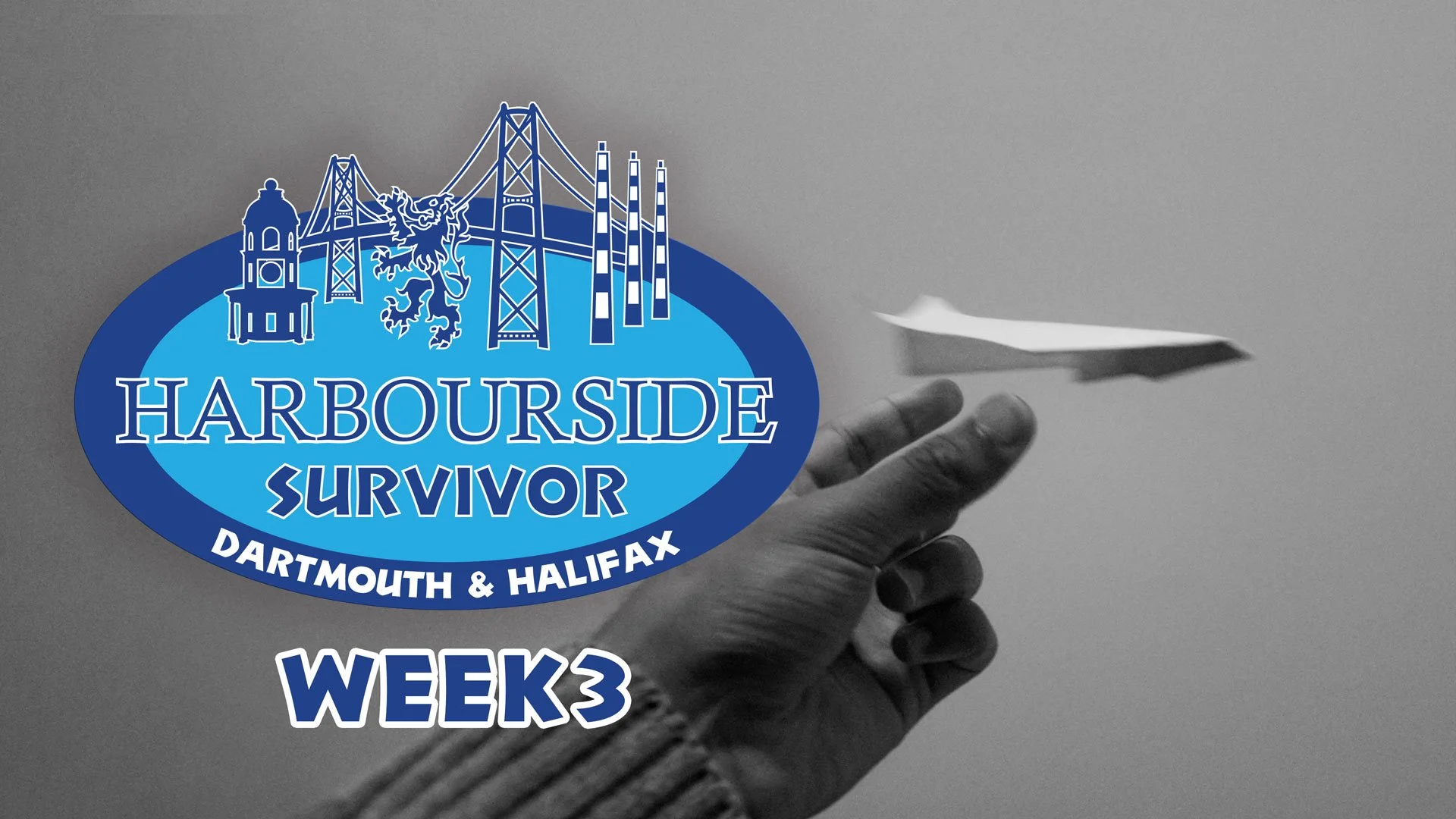Harbourside Survivor 2025: Week 3
A Tribute to The Office
“Reminder that today there is an immunity challenge at lunch! If you can’t make it, be sure to nominate a copilot to complete the task in your stead. Take off is at 12:15 in the lunchroom.
Get ready to fly high and make Dunder Mifflin proud.”
These are the words that graced Harbourside inboxes last Wednesday, October 1st in the Dartmouth office. Those who have seen The Office knew exactly what to expect. If you haven’t watched this particular pop-culture sensation, it was pretty easy to read the subtext of this brief, yet ever-so important, message.
Dunder Mifflin is the fictional paper-vendor in the ubiquitous hit T.V. series The Office. The show explores the relationships between disparate co-workers in corporate-American office setting. Naturally, whacky hijinks ensue in almost every episode despite the stodgy atmosphere. The comedy stems from a gut-wrenching lack of awareness from upper management (“cringe comedy”), and how the heartwarming staff find meaning and connection in their day-to-day lives within the confines of drab cubicles and outdated office technology.
Although The Office is a caricature of what it’s like to work in an actual office, many of the parody elements rang true for people across the corporate spectrum. This is one of the reasons the show was so successful during its initial run. It spoke to people on a fundamental level. It resonated with them, and what they were experiencing in their work lives. To a lesser degree, everyone knows a “Pam”, a “Dwight”, or a “Michael”. Everyone has had to deal with clients, the good and the bad, and everyone has had to navigate difficult social channels in a professional work setting.
Learning from the Dunder Mifflin Team
In the way of serialized television, most episodes end on a positive note, with the cast having resolved the majority of the conflicts introduced that week before the credits start to role. What makes this show particularly unique in the world of sit-coms, however, is that interpersonal conflicts tend to endure from episode to episode. Sometimes, this tension can last an entire season before the audience gets to see any resolution. Sometimes those resolutions are messy. Sometimes people get hurt. Sometimes the audience isn’t laughing. We are brought close to these fictional characters, and we experience both their highs and their lows when the dam finally breaks.
Challenges of Communicating in Corporate
This is incredibly similar to the real world, and likely why people made such a connection with the show. Corporate culture, office politics, and social dynamics are complicated. Navigating these and resolving conflict in a corporate setting are not always straightforward. Not everyone has the same capacity for direct confrontation, not everyone has the same interpersonal skills, and not everyone has the same level of emotional understanding.
Forging Connections
At its heart, despite the cringe-inducing moments, The Office is a comedy. Though we see the characters struggle and come into conflict, something else is happening at the same time. The Office is excellent at showing those little moments of tenderness and connection (in spite of the friction) between the Dunder Mifflin staff. It shows that the characters care for each other, look out for each other, and value each other. As an example, despite early conflicts between Dwight and Pam, each shows incredible moments of empathy towards the other when the other is in need. The fact that this tenderness sometimes comes with a comedic twist does not take away from the emotional pay off. It brings the audience’s emotional state back up with the characters, helping US to empathize with them. This happens at the same time we see the cast forging bonds, and it keeps happening throughout the run of the show. Characters with differing levels of social and communication skills are able to find common ground through the bonds that they forge. This lends credence to why they continue working together despite every struggle the writers put them through.
What Dunder Mifflin Teaches Us
It is an uplifting feeling when we see these connections being made between characters. It teaches us that we can resolve conflict in our own corporate lives, and find the moments of light, even when the days are humdrum, or when 5 O’clock can’t come soon enough. It also lends credibility to the fact that, yes, these very (very) disparate people, who just so happen to be working for the same company, would indeed come together to have a paper airplane competition.
Back to Paper Airplanes and Survivor…
We are not Dunder Mifflin. We are Harbourside Engineering Group. That doesn’t mean that we can’t take the lessons learned from this show and apply them to our own office setting. Forging connections between team members, working together, and finding a little bit of light in every day.
This week’s challenge: a paper airplane competition.
Each participant would craft a paper airplane to throw and pilot at lunch time. The team with the highest AVERAGE distance would be the winner. Unlike The Office, there was no cash incentive. Instead, teams were playing for immunity. Whichever team won would be safe for another week, while the two losing teams would each have to lose another member apiece.
The Average Distance Flown
As the teams were unequal in size at the start of this week, average flight distance was determined to be the fairest means of administering this challenge. Red Team had already lost 2 participants, having lost two challenges back-to-back. Blue team lost one participant in the first challenge, and Green, already the largest team, had only lost one member to date. Each participant would have to fold and throw their own plane. This would involve both technical folding skill, and a steady hand.
The First Win for Red Team
Luck would be on Red Team’s side this week. They successfully avoided most catastrophic crashes, planes getting stuck in ceiling tiles, or any reverse-flights that plagued the other teams. This would mark the first immunity challenge won by the Red Team. Kudos!
Blue and Green each proceeded to a vote. While Green’s vote was decided rather emphatically, the Blue Team was forced into a re-vote due to a tie! What challenges will await the teams next week, as their numbers start to dwindle?
Blue Team, Average Flight Distance: 5.61 m
Green Team, Average Flight Distance: 5.82 m
Red Team, Average Flight Distance: 6.16 m


